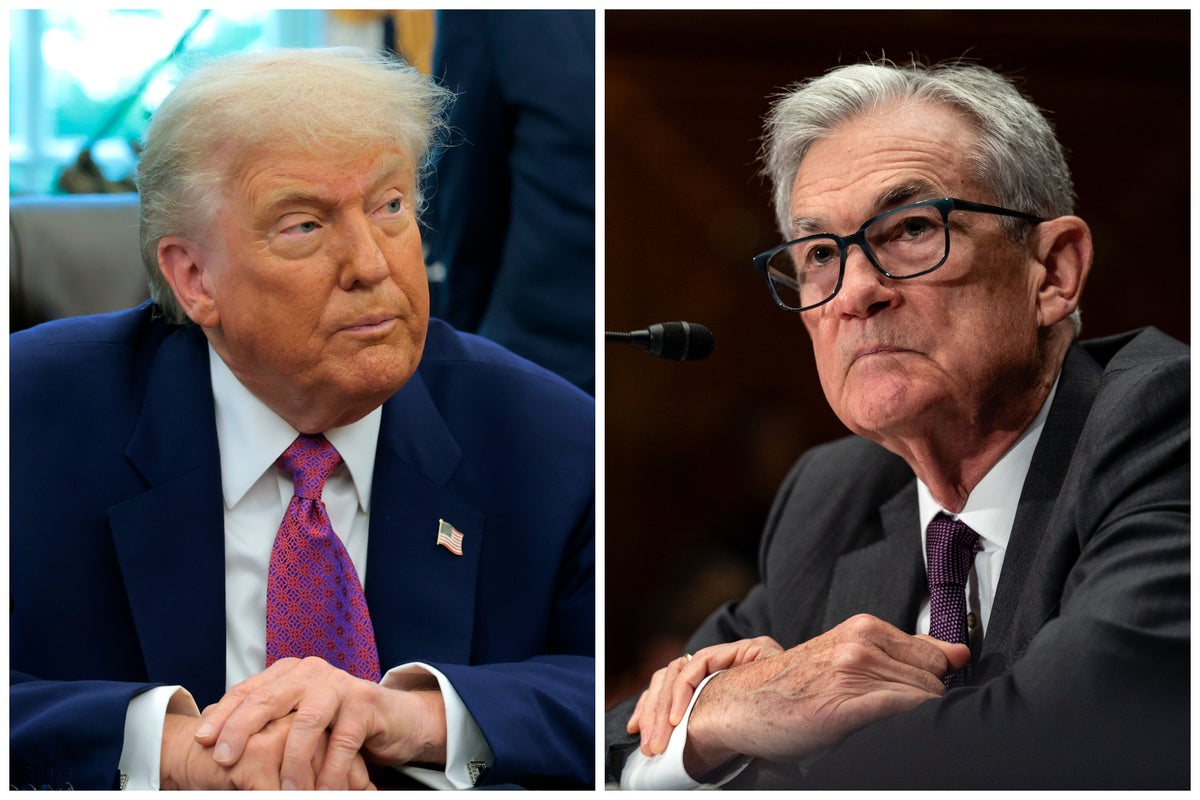President Donald Trump has found a new front in his war against Federal Reserve Chairman Jerome Powell – and a potential way to rid himself of the nation’s central banker.
Trump has made no secret of his distaste for Powell, whom he nominated to lead the Federal Reserve in 2018, primarily because of Powell’s refusal to lower interest rates, particularly in light of Trump’s decision to levy tariffs. This weekend, Trump announced that he would impose a 30 percent “reciprocal tariff” rate on Mexico, one of the United States’ biggest trading partners, and on the European Union.
Powell has said that the central bank needs time to see what effects tariffs will have on inflation and employment before making a determination on interest rates. This has prompted Trump to call Powell a “stupid person.”
The president can do little to remove Powell. Joe Biden re-nominated Powell for another five-year term in 2021 based on his steady leadership during the 2020 COVID-19 pandemic, and his term would expire in May. Federal statute says the president can only remove Powell “for cause.”
And it looks like the White House has found a “cause.”
Last week, Russell Vought, the chairman of the Office of Management and Budget and a key architect of Project 2025, sent a letter to Powell criticizing him for running over budget. Vought assailed Powell for supposed renovations to the Marriner S. Eccles Federal Reserve Board Building that houses the Fed, saying Powell approved VIP dining rooms, water features and premium marble.
On Sunday, Kevin Hassett, Trump’s director for the National Economic Council, appeared on ABC’s This Week, where host Jonathan Karl asked Hassett if the president had the authority to fire Powell.
“That’s a thing that’s being looked into, but certainly, if there’s cause, he does,” Hassett said. The director, who worked in the first Trump administration, has been floated as a potential replacement for Powell.
In response, the Federal Reserve took a surprising step during the weekend of putting up a “frequently asked questions” page about the building project. The page denied allegations that the renovation included plans for dining rooms, a VIP elevator or water features for the Eccles Building.
Powell’s tenure has not been perfect. Like many other officials in the aftermath of the COVID-19 pandemic, Powell said that inflation would “wane” and famously said that inflation in 2021 would be “transitory.” That was not the case and the nation went through months of rapid price hikes.
He subsequently raised interest rates to break inflation, acknowledging some “pain to come.” But in the coming years, Powell largely succeeded in curbing inflation while the economy added jobs in Biden and Trump’s administrations.
All of this is immaterial though. Clearly, the White House is using the renovation as a pretext to fire Powell for a legitimate policy disagreement. Tariffs are an article of faith for the president and one of his few sincere beliefs on which he has not budged.
But almost every major economist has said that the cost of imposing would go directly to consumers.
And given the fact that it would take a while to see the actual effects of tariffs, combined with the fact that Trump has repeatedly paused them, it would make sense for the Federal Reserve to see what effects the tariffs have on the economy before taking action on interest rates. That runs counter to the president’s desire for every major federal appointee and employee to behave in fealty to his agenda, even though taxpayers do not fund the Federal Reserve, but rather through interest on government securities that it holds.
Almost any time that Trump hints at sacking Powell, the stock market proceeds to take a hit, which seems to cause him to pull back. But if Trump can create a seemingly plausible cause to dismiss Powell, he can finally install someone who is a loyalist to the central bank.
And don’t expect Congress to take action if even the dismissal would on flimsy charges, given almost no Republican wants to stand up to Trump on any legitimate policy.
All of this serves as just the latest test to see how far many ostensibly independent agencies Trump can break, and whether he can do so with the consent of the guardrails on the executive branch.


